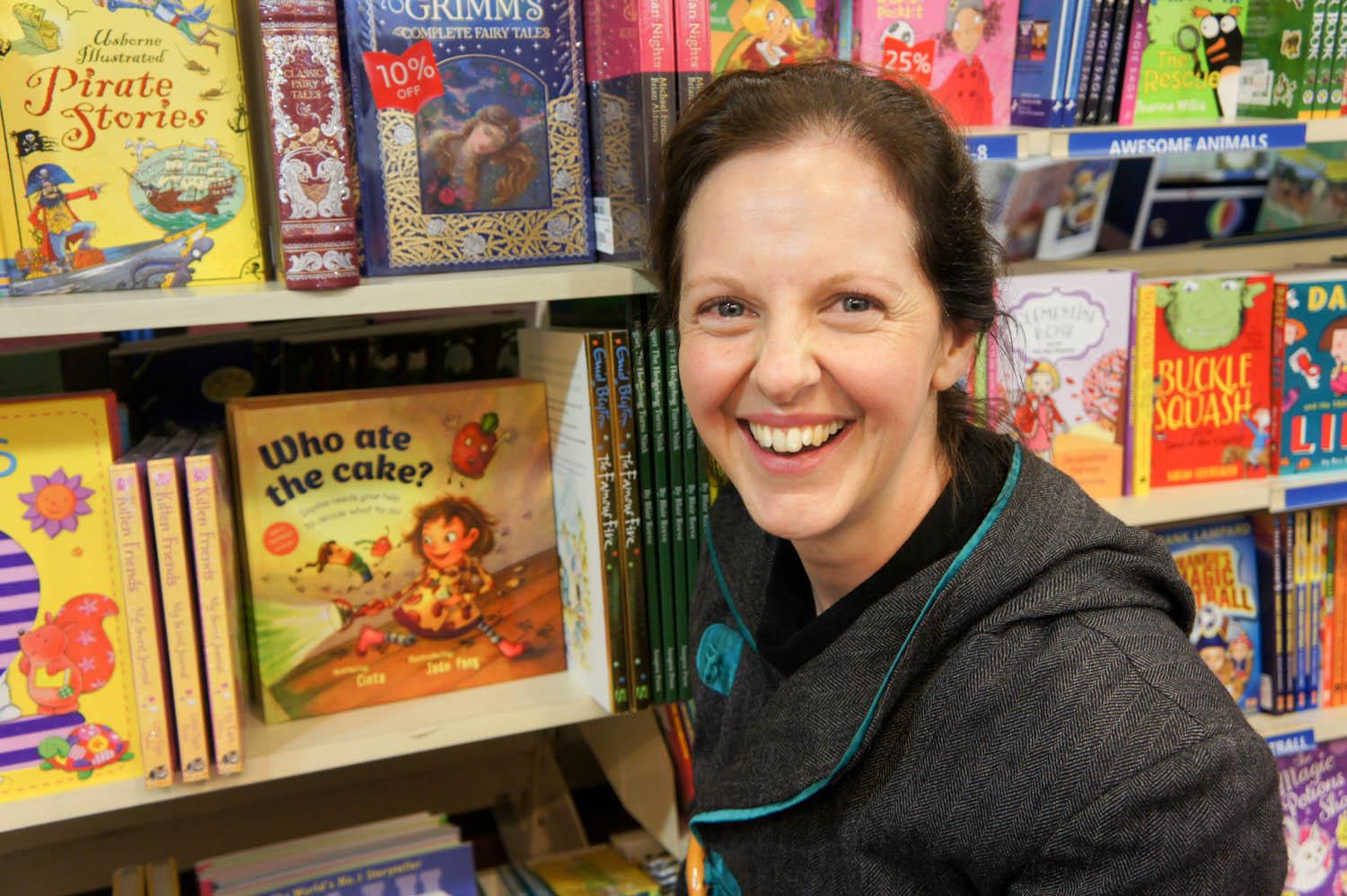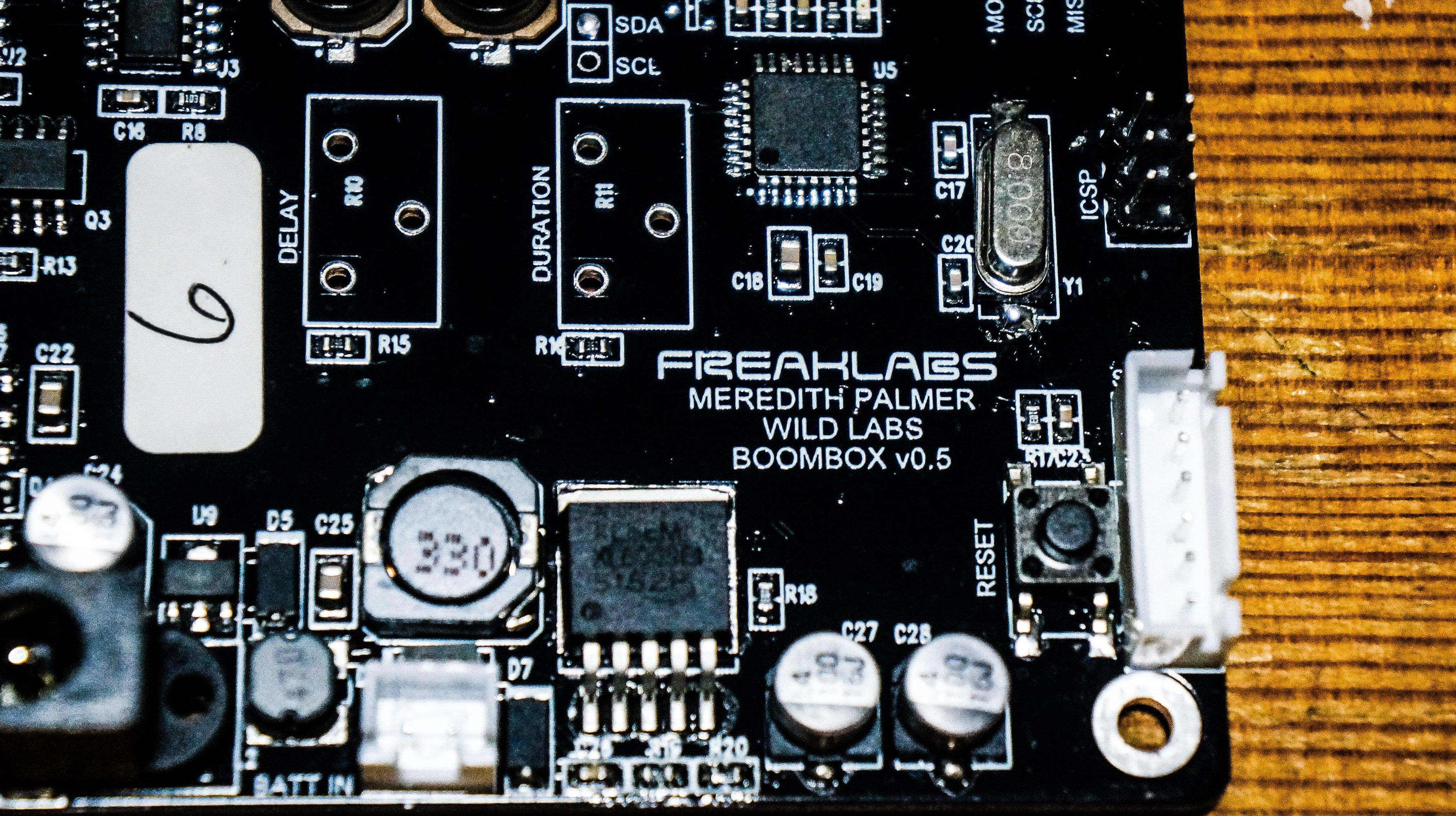Built to foster collaborations and connect people with tech expertise to those in conservation who need skills and tools, WILDLABS is a space to create real innovations together. In our annual #Tech4Wildlife Photo Challenge, community members showcase their hard work on the ground and in the lab, and highlight the impacts of conservation technology on research, biodiversity and environmental monitoring, wildlife crime prevention, and more.
In last year's photo challenge, Dr. Meredith Palmer shared footage from the BoomBox, an innovative camera trap system with custom audio cues, designed to non-invasively gather data on "the landscape of fear" - predator and prey behaviors within their environment. Born from a thread in our Community forums, the resulting collaboration between Meredith and Freaklabs' Jacinta and Akiba, the BoomBox has become one of WILDLABS' best collaborative success stories.
We use camera traps that produce predator cues when triggered, allowing us to study anti-predator behaviors in nature! Using the data-generating power of CTs in a manipulative experiment helps us better understand how predators structure ecosystems #Tech4Wildlife @WILDLABSNET pic.twitter.com/TaVHAW9KAW
— Meredith S. Palmer, Ph.D. (@songofdodo) March 2, 2020
The origin story of the BoomBox demonstrates not only how WILDLABS can connect people from around the world to find unique solutions to conservation tech problems, but also how exciting, versatile, and impactful inventions can come from unexpected sources!
In the midst of planning a field project that would use audio cues to understand prey species' reactions to a predator's presence (a complicated research question to answer non-invasively, and also an excellent tongue-twister if said five times fast), Meredith suddenly found herself without access to the needed audio device.
"This was something brand-new in terms of data, and something so hard to even witness in the wild organically," Meredith tells us. Without the audio device, the kind of data Meredith needed would be all but impossible to collect. Unable to build a similar device herself or locate a replacement, and in a serious time crunch, she turned to WILDLABS' Camera Trap community forum for help.
"One of the big hurdles with conservation tech is knowing where to go for this kind of thing. I didn't even know where to begin making the right connections to make this device," says Meredith, "And I think that's what the WILDLABS forums do really well. They connect you to people with skills you didn't even know you needed." On the forum, she found Akiba, who says he chose to respond because he was "very intrigued by the question, and I really wanted to understand what it would be used for. But originally, I only planned to offer advice." Luckily for Meredith and WILDLABS, it didn't end there!
Anyone want to guess which @WILDLABSNET #tech4wildlife collaboration we're featuring tomorrow? This video from a favorite WILDLABS collaborator is your hint! (And yes, this board game tech DOES relate to #tech4wildlife!) pic.twitter.com/tHiNnH66Ao
— Ellie Warren (@EllieWroteThat) February 26, 2021
Jacinta and Akiba explained the biggest hurdle in collaborations in tech engineering and conservation: simply understanding the needs and capabilities that each party brings to the table. Jacinta says that the first part of this collaboration began with basic communication.
"We were literally starting from basics," she says of the early days of BoomBox, "From our side, we're asking things that seem simple to someone in conservation - how do you use these camera traps? Once they're at the site, what do you do with it? How do you get the data? - but these questions are necessary for us to know how this tool will be used and what it needs. And WILDLABS' community is really good at providing that bridge."
By honestly and openly approaching subjects that we don't yet understand and breaking them down to basics, Jacinta believes, "There's a translation that happens between ecologist needs and technology needs, and vice versa. You look for a common frame of reference. Once you let go of the idea that something is common knowledge - because nothing is actually common knowledge - and the pressure to already understand each other's work, you can focus on exchanging knowledge and ideas. And that's where the really interesting conversations come from."

Likewise, Akiba says, "Ecologists aren't aware of what options are available, and technologists aren't aware of what the real problems are." By focusing on opening lines of communication, Akiba and Jacinta gained a fuller picture of what existing technology or customizations Meredith's research set-up would require, and realized that they already had a starting point for building exactly what she needed. "We realized that it sounded just like an Mp3 player for animals," says Akiba, "and we'd just been working with Mp3 playback technology for board games based on Jacinta's children's book. So the starting point for the BoomBox was literally a chip designed for toys."

Jacinta with her book that unexpectedly lead to the BoomBox system.
With an understanding of Meredith's project needs, Akiba and Jacinta set out to create a tool that was better than the original idea, with more customization and adjustable settings, and crucially, more durability and ease of use in the field. "The last thing you want is a really complex piece of technology," says Meredith, who had a tight turnaround time for this project to be deployed (approximately three months from the team's first communications, including ample international shipping time to get the finished devices into her hands), and needed something simple, intuitive, and easy to troubleshoot.
The fact that the BoomBox ended up being so easy to use in the field is quite remarkable considering how much this system is capable of, combining video camera traps triggered by the presence of an animal to capture behavior, with the same sensor also triggering the predator audio cue (with customized delays and randomization as well).
final product! pic.twitter.com/3YnJEcpRQM
— Meredith S. Palmer, Ph.D. (@songofdodo) March 1, 2020
Because the Freaklabs duo started with the building blocks of an existing technology, the turnaround time was far faster than if they'd customized the system from scratch. But the collaboration, like anything in conservation tech, certainly wasn't without its hiccups, or its fair share of suspense! "It was an international effort to get the devices to her in time," says Akiba, explaining how all their troubleshooting had to be completed before Meredith left through the field, with both parties shipping devices back and forth to test. When Bushnell's camera circuit board changed at the last minute, express shipping saved the day to troubleshoot and ensure that the new board would still work with the device.
The team's attention to detail and dedication to planning in advance paid off. "The usual expectation in a field season is that everything that can go wrong will go wrong. But not in this field season!" Meredith says of her experience deploying and using the devices. "Any time something happened in the field, we were able to fix it."

At Meredith's field sites, the BoomBox system went on to gather unprecedently thorough data on prey response behaviors in African species within "the landscape of fear," as well as capturing unique and beautiful footage of wildlife.
The collaboration on BoomBox continues, with the Freaklabs duo and Meredith both eyeing future possibilities for further customization, and for using the BoomBox's technology in other projects. Meredith is interested in how BoomBox could make conservation work and behavioral studies of species less invasive, and Akiba and Jacinta are working toward both experimental ideas like customizing the ability to take control of the camera, as well as developing BoomBox into an open source tool to serve the community's needs. "At its core, if it has the same functionality, then you can say, 'If it can do this, we can apply it to this,' and keep building it up to meet custom needs," says Jacinta.
At the moment, Meredith is collaborating with Freaklabs as an advisor on a BoomBox project known as "BoomBox Disco," a project that takes the core of Meredith's research concept and applies it to preventing human-wildlife conflict, using lights and sounds to deter elephants from destroying crops.

So what can the WILDLABS community learn from the BoomBox team's experience collaborating together? Jacinta reinforces the idea of open communication as the key to successful collaborations. "Before you begin, try to understand what you want out of it, what is needed, what is realistic, and what you can commit to. Things will go wrong with projects, so I would emphasize dynamic communication because that’s what will get you through any hard times."
If you're considering starting a conservation tech collaboration, Meredith encourages the WILDLABS community to reach out to each other and give it a try - even if you don't know exactly what you're looking for yet! Learning from each other is part of the collaborative experience, and something that happens naturally when connections are made through WILDLABS.
"The platform is so good at putting people together to connect problems with solutions," says Meredith. "One day I posted looking for help, and it seemed like this miracle fell into my lap! And it was the best conservation tech experience I've ever had."
If you're ready to begin your own collaboration through WILDLABS, start a conversation in our community forums.





Add the first post in this thread.